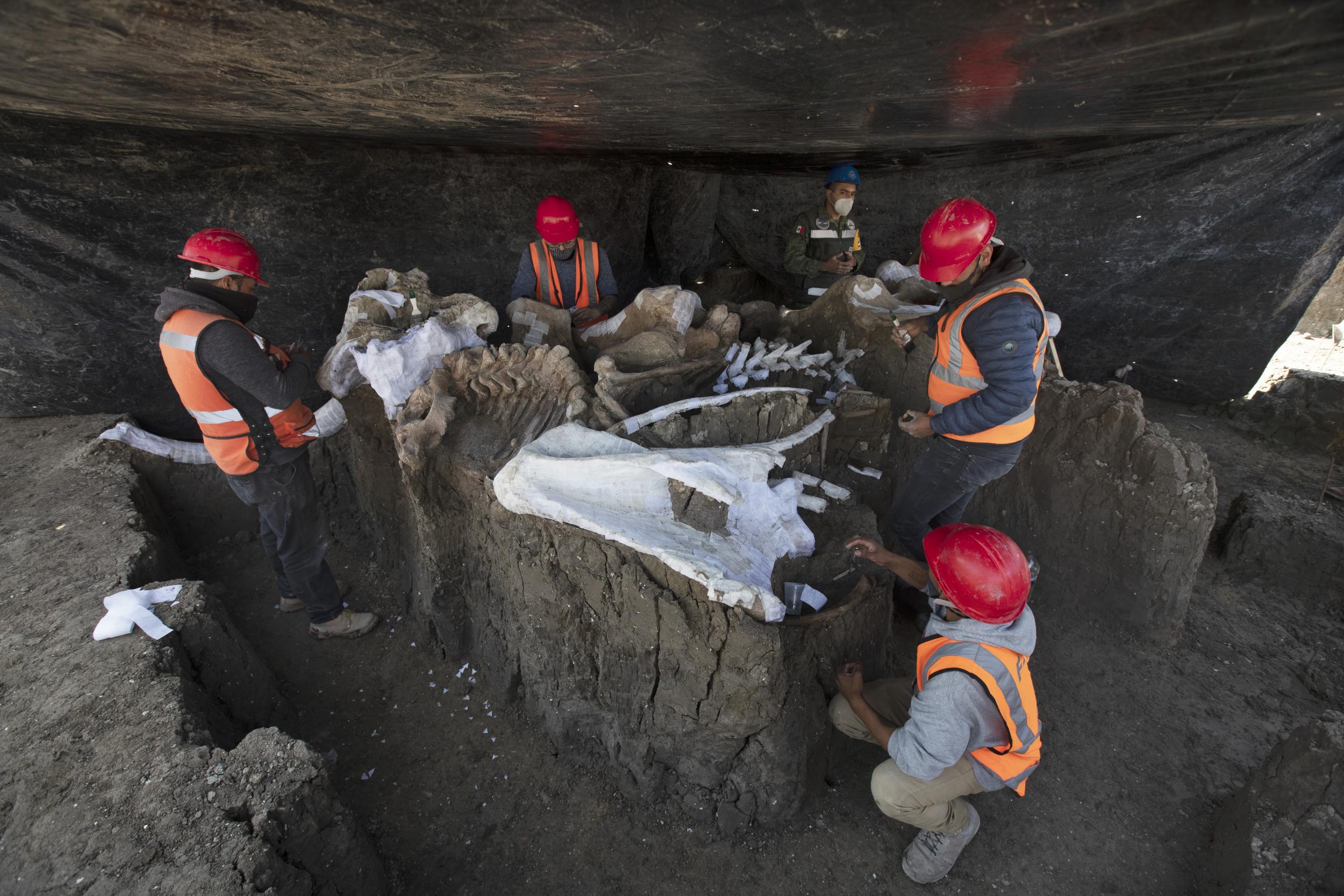At least 200 mammoth skeletons discovered under Mexico City airport site
Experts hope the finds will help solve mystery of their extinction

Your support helps us to tell the story
From reproductive rights to climate change to Big Tech, The Independent is on the ground when the story is developing. Whether it's investigating the financials of Elon Musk's pro-Trump PAC or producing our latest documentary, 'The A Word', which shines a light on the American women fighting for reproductive rights, we know how important it is to parse out the facts from the messaging.
At such a critical moment in US history, we need reporters on the ground. Your donation allows us to keep sending journalists to speak to both sides of the story.
The Independent is trusted by Americans across the entire political spectrum. And unlike many other quality news outlets, we choose not to lock Americans out of our reporting and analysis with paywalls. We believe quality journalism should be available to everyone, paid for by those who can afford it.
Your support makes all the difference.At least 200 mammoth skeletons have been discovered at an airport construction site near Mexico City, with many more still be be excavated.
Experts hope the site on the shores of an ancient lake bed, which attracted and trapped mammoths in its marshy soil, will help solve the mystery of their extinction.
Discoveries are still being made in the area, archaeologists said. Some early clues suggest that humans made tools from the bones of the giant mammals, which disappeared from Earth between 10,000 and 20,000 years ago.
There are so many mammoths at the site of the new Santa Lucia airport that observers have to accompany each bulldozer that digs into the soil to make sure work is halted when bones are uncovered.
“We have about 200 mammoths, about 25 camels, five horses,” said archaeologist Ruben Manzanilla Lopez of the National Institute of Anthropology and History.
The site is only about 12 miles from artificial pits, essentially shallow mammoth traps, that were dug by early inhabitants to ensnare and kill dozens of the elephant-like creatures.
Mr Manzanilla Lopez said evidence is emerging that suggests even if the mammoths at the airport died natural deaths after becoming stuck in the mud of the ancient lake bed, their remains may have been carved up by humans. A similar discovery was made at the mammoth-trap site in the hamlet of San Antonio Xahuento, in the nearby township of Tultepec.
While tests are still being carried out on the bones to try to find possible butchering marks, archaeologists have found dozens of mammoth-bone tools, usually shafts used to hold tools or cutting implements, like the ones in Tultepec.
“Here we have found evidence that we have the same kind of tools, but until we can do the laboratory studies to see marks of these tools or possible tools, we can’t say we have evidence that is well-founded,” Mr Manzanilla Lopez said.
Palaeontologist Joaquin Arroyo Cabrales said the airport site “will be a very important site to test hypotheses” about the mass extinction of mammoths.
“What caused these animals’ extinction, everywhere there is a debate, whether its was climate change or the presence of humans,” Mr Arroyo Cabrales said.
“I think in the end the decision will be that there was a synergy effect between climate change and human presence.”
Ashley Leger, a palaeontologist at the California-based Cogstone Resource Management company who was not involved in the dig, noted that such natural death groupings “are rare”.
“A very specific set of conditions that allow for a collection of remains in an area but also be preserved as fossils must be met,” she said.
“There needs to be a means for them to be buried rapidly and experience low oxygen levels.”
The site near Mexico City appears to have outstripped the Mammoth Site at Hot Springs, South Dakota, which has about 61 sets of remains, as the world’s largest find of mammoth bones.
Large concentrations have also been found in Siberia and at the La Brea tar pits in Los Angeles.
For now, the mammoths seem to be everywhere at the construction site. The discoveries may slow down, but not stop work, on the new airport.
Mexican army captain Jesus Cantoral, who oversees efforts to preserve remains at the army-led site, said “a large number of excavation sites” are still pending detailed study, and that observers have to accompany backhoes and bulldozers every time they break ground.
The project is so huge, he noted, that the machines can just go work somewhere else while archaeologists study an area.
The airport project is scheduled for completion in 2022, at which point the dig will end.
Additional reporting by AP
Join our commenting forum
Join thought-provoking conversations, follow other Independent readers and see their replies
Comments